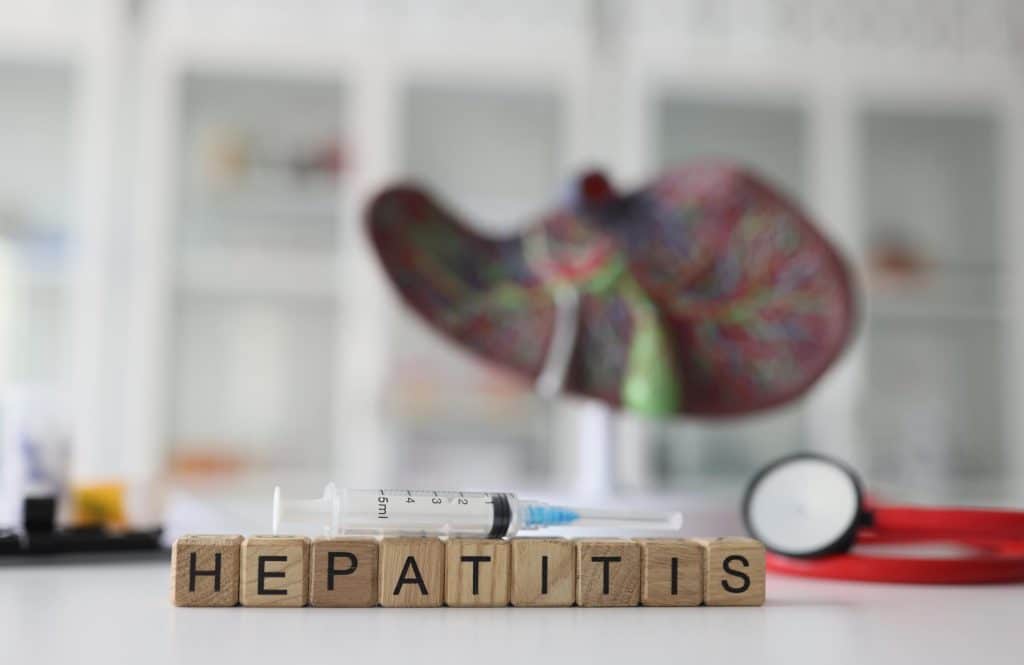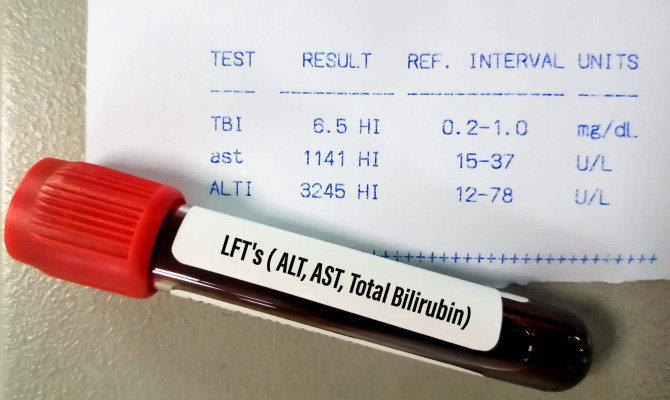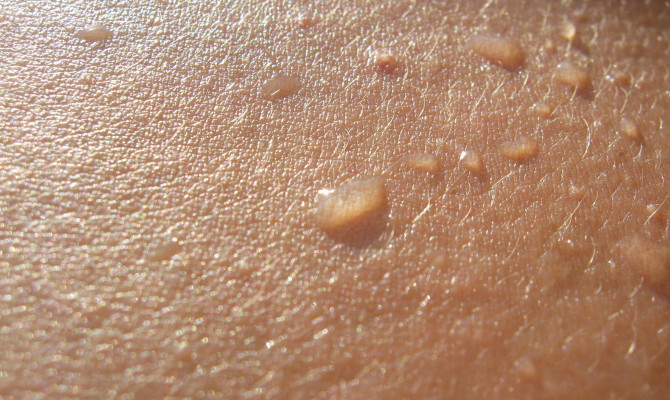Understanding Hepatitis D: Symptoms, Causes, Diagnosis, and Treatment

- Hepatitis D
- 22 Aug 2023
Overview
What is Hepatitis D?
Hepatitis D is a viral disease that causes pain and swelling of the liver. The liver swelling damages the liver and hampers its correct functioning. It can lead to continuing liver trouble which can eventually cause cancer (tumor) and liver scarring.
Hepatitis D is one of the several kinds of Hepatitis viz; Hepatitis A, Hepatitis B, Hepatitis C, and Hepatitis E.
People get Hepatitis D infection only if they are Hepatitis B infected. Doctors can stop serious complications of Hepatitis D if detected at a premature stage.
To date, there is no vaccine for hepatitis D, but the Hepatitis B vaccine can prevent the disease occurrence in uninfected people 1Overview| Researched based study from Sciencedirect.com

Fast facts of Hepatitis D
- The other name of Hepatitis D is delta hepatitis.
- Hepatitis D is widespread across Asia, Africa, South America, the Middle East, Eastern Europe, and Greenland.
- Hepatitis D is infrequent in the United States, but cases are highest among Asian Americans or people migrated from other countries to America 2Overview| Researched based study from Who.int
- Around 5% of people worldwide can have hepatitis D infection if previously infected with chronic hepatitis B
- The prevalence of global hepatitis D has decreased since 1980 due to the successful hepatitis B vaccination program
Stages
Stages of Hepatitis D
Acute Hepatitis D Stage
- It is a temporary short-period infection with symptoms similar to other Hepatitis.
- It occurs unexpectedly with more severe symptoms
- It resolves on its own within one month or less
Chronic Hepatitis D stage
- It happens for a more extended period, and the infection does not resolve on its own
- People develop complications more rapidly when coupled with chronic Hepatitis B 3Stages| Researched based study from Nlm.nih.gov
Symptoms

Symptoms of Hepatitis D
Acute Hepatitis D Symptoms are:
- Fever
- Appetite loss
- Extreme tiredness
- Nausea and vomiting
- Upper abdominal pain
- Light colored stool
- Dark urine
- Yellowing of the white portion of the eyes and skin(jaundice)
Chronic Hepatitis D Symptoms
People with chronic Hepatitis D may not notice symptoms for years. However, with time they might experience the following symptoms:
- Undefined weight loss
- Weakness
- Extreme tiredness
- Abdominal swelling
- Inflamed ankles
- Joint pain
- Muscle pain
- Skin itching
- Yellowing of the eyes and skin (jaundice) 4Symptoms| Researched based study from Nlm.nih.gov
Signs needing urgent medical attention
Some of the symptoms that need medical attention are as follows:
- Fever
- Jaundice
- Extreme tiredness
- Nausea and vomiting
- Upper abdominal pain
- Dark urine
Causes
Causes of Hepatitis D
- Hepatitis D occurs by direct contact with the infected person’s body fluid. However, only Hepatitis B infected person can get the infection as the hepatitis D virus needs the hepatitis B virus to reproduce and survive 5Causes| Researched based study from Nlm.nih.gov
Diagnosis
Diagnosis of Hepatitis D
The doctor will initially conduct a thorough physical examination followed by a detailed inquiry about the symptoms, risk factors, and patient’s medical condition. Subsequently, the doctor might order the following test:
Blood test
- It examines the anti-hepatitis D antibodies in the blood sample.
- A positive result indicates the hepatitis D virus infection
Liver function test
- It is a blood test to examine the liver health
- It measures the substances made by the liver viz; bilirubin (yellow substance form from the breakdown of old red blood cells), enzymes, and proteins.
- Increased or decreased levels indicate different diseases.
Liver Elastography
- It is an ultrasound technique that evaluates the stiffness of the liver tissues.
- Ultrasound is an imaging technique that utilizes sound waves to get pictures of the body’s internal organs.
Liver biopsy
- It is a technique in which the doctor removes small tissue from the liver with a fine needle. The pathologist then thoroughly examines the removed liver tissue under a microscope for any disease 6Diagnosis| Researched based study from Nlm.nih.gov
Risk factors
Risk factors for Hepatitis D Transmission
Conditions in which the person can get in contact with infected body fluids are as follows:
- Unprotected sex
- Sharing needles
- Blood contact
- Childbirth
- Touching sores that contain the virus
- Unsterilized medical equipment
Conditions in which a person cannot get Hepatitis D infection are:
- Sneezing
- Coughing
- Hugging
- Shaking hands
- Sitting next to an infected person
- Sharing eating utensils
People with the following conditions are more prone to get Hepatitis D infection:
- Hepatitis B-infected people
- People without the Hepatitis B vaccine
- People who inject drugs
- Practice unprotected sex with multiple partners
- Live in Hepatitis D prevalent areas 7Risk factors| Researched based study from Nlm.nih.gov
Complications
Complications of Hepatitis D
Acute Hepatitis D rarely causes liver damage.
Chronic Hepatitis D can cause the following complications:
Liver cancer
- It is the abnormal cell growth in the liver.
- Early diagnosis and treatment help cure the liver cancer
Liver cirrhosis
- Cirrhosis is the condition in which the liver’s healthy tissue is replaced by scar tissue.
- With time, the liver loses the capacity to work correctly. It gradually leads to permanent liver damage.
Liver failure
- Liver failure is the incapability of the liver to work appropriately 8Complications| Researched based study from Nlm.nih.gov
Treatment
Treatment of Hepatitis D
There is no cure for Hepatitis D. However, treatments are available to manage the condition. Patients with hepatitis D might also require treatment for hepatitis B.
Medicines for chronic Hepatitis D
PEGylated interferon- alpha
- It is a drug to prevent the spreading of the virus and manage symptoms from worsening. Depending on the patient’s condition, the doctor might recommend taking the medication for around one year,
Medicines for Hepatitis B
Antiviral medicines
- It is a drug to help the body fight viruses. Some examples of antiviral drugs are Tenofovir, Adefovir, Entecavir.
Immunomodulating drugs
- It is a drug to modify the body’s immune response
Surgical option
Liver transplant surgery
- People with liver damage and liver cirrhosis might require a liver transplant.
- Liver transplant surgery is the whole or partial replacement of the damaged or part of the diseased liver with a donor’s healthy liver.
- In 70% of the cases, the longevity of the patients after a liver transplant is five years or longer 9Treatment| Researched based study from Nlm.nih.gov
Prevention
Prevention of Hepatitis D
- Get vaccinated with hepatitis B vaccine
- Practice using condoms and avoid unprotected sex with your partner
- Avoid injecting recreational drugs viz; cocaine and heroin
- Avoid sharing personal items viz; razors, and nail clippers
- Get tattoos only from trusted shops that use clean piercing equipment 10Prevention| Researched based study from Nlm.nih.gov
Coinfections
Coinfection & Superinfection
Coinfection
- Coinfection occurs when hepatitis D and hepatitis B co-occur.
- It causes acute, short-duration B and D infections and might show severe symptoms.
- Most people fight off acute B and D infections, and the condition resolves with time. Rarely in less than 5% of coinfection cases, the acute form turns into a chronic state, and the virus does not go away.
Superinfection
- Superinfection occurs when people with chronic hepatitis B infection get hepatitis D infection.
- It shows up the severe symptoms of acute Hepatitis.
- In about 90% of superinfection cases, the body cannot fight the Hepatitis D infection. Consequently, the person develops chronic forms of Hepatitis D and Hepatitis B 11Coinfection| Researched based study from Nlm.nih.gov
Outlook
The Outlook
- Hepatitis D is a severe viral disease that causes inflammation of the liver.
- Hepatitis B vaccination can prevent hepatitis D infection
- Hepatitis D is incurable. However, medicines are available to prevent the worsening of the symptoms. Timely diagnosis is a must to avoid liver damage.
- Untreated Hepatitis can cause serious complications such as liver cancer, liver failure, and liver cirrhosis. Chronic hepatitis patients get complications more often than acute hepatitis patients.
- One with symptoms of disease must immediately consult a doctor right away to get on-time treatment and avoid unwanted complications
Any feedback on this article?
 This Articles content was accurate
This Articles content was accurate Very Informative Article
Very Informative Article I have a question or a comment
I have a question or a comment
 This article contains inaccurate content
This article contains inaccurate content This article was not helpful
This article was not helpful I have a question or a comment
I have a question or a comment
We appreciate your helpful feedback!
Checkout our social pages
References
-
Science Direct
Hepatitis D - an overview | Overview
-
World Health Organization
Hepatitis D | Overview
-
National Library of Medicine
Hepatitis D | Stages
-
National Library of Medicine
Hepatitis D Virus: A Call to Screening | Symptoms
-
National Library of Medicine
Hepatitis D Review: Challenges for the Resource-Poor Setting | Causes
-
National Library of Medicine
Hepatitis Delta: Epidemiology, Diagnosis and Management 36 Years After Discovery | Diagnosis
-
National Library of Medicine
Risk Factors for Delta Hepatitis in a North American Cohort: Who Should be Screened? | Risk
-
National Library of Medicine
Hepatitis D Virus and Hepatocellular Carcinoma | Complications
-
National Library of Medicine
Treatment of hepatitis D | Treatment
-
National Library of Medicine
Hepatitis D | Prevention
-
National Library of Medicine
Hepatitis D Virus Coinfection and Superinfection | Co-infection


































